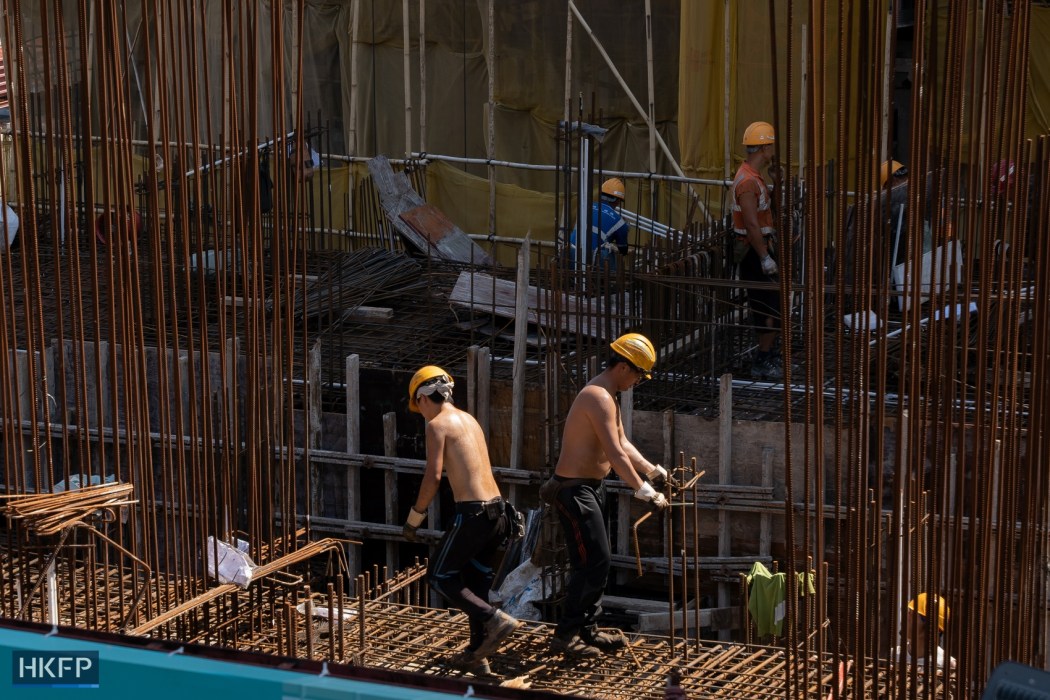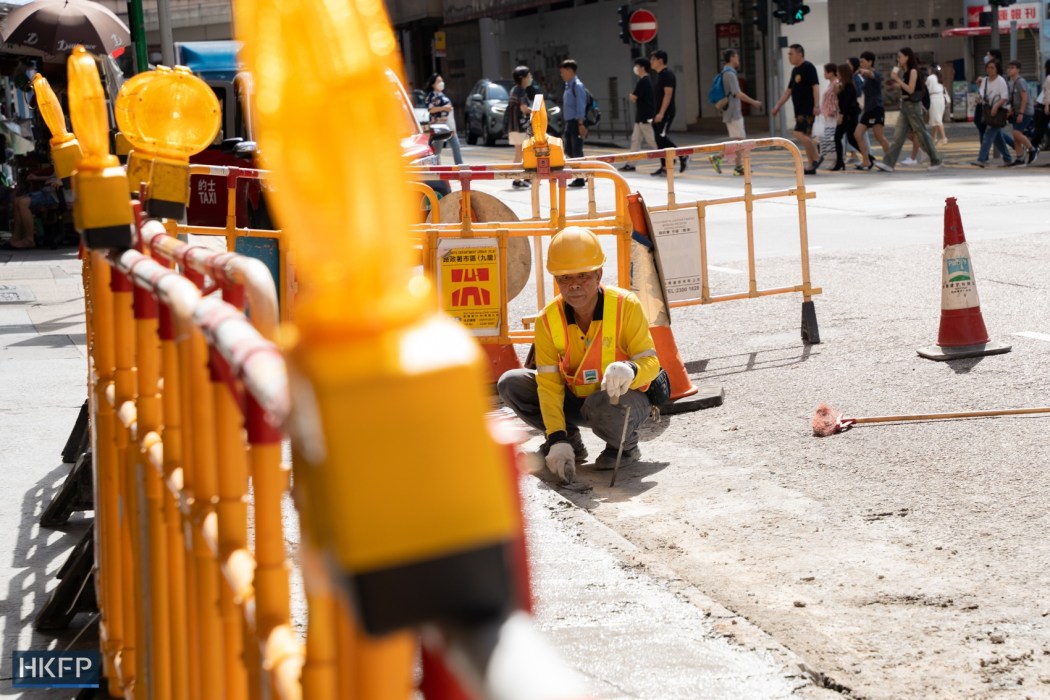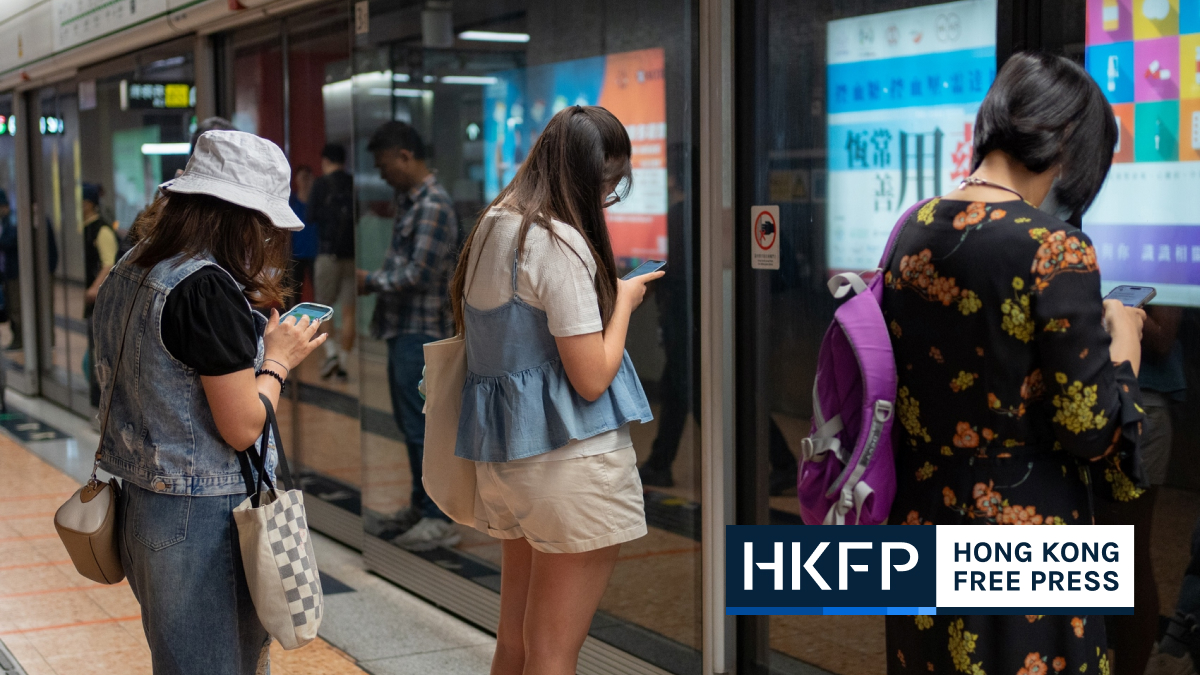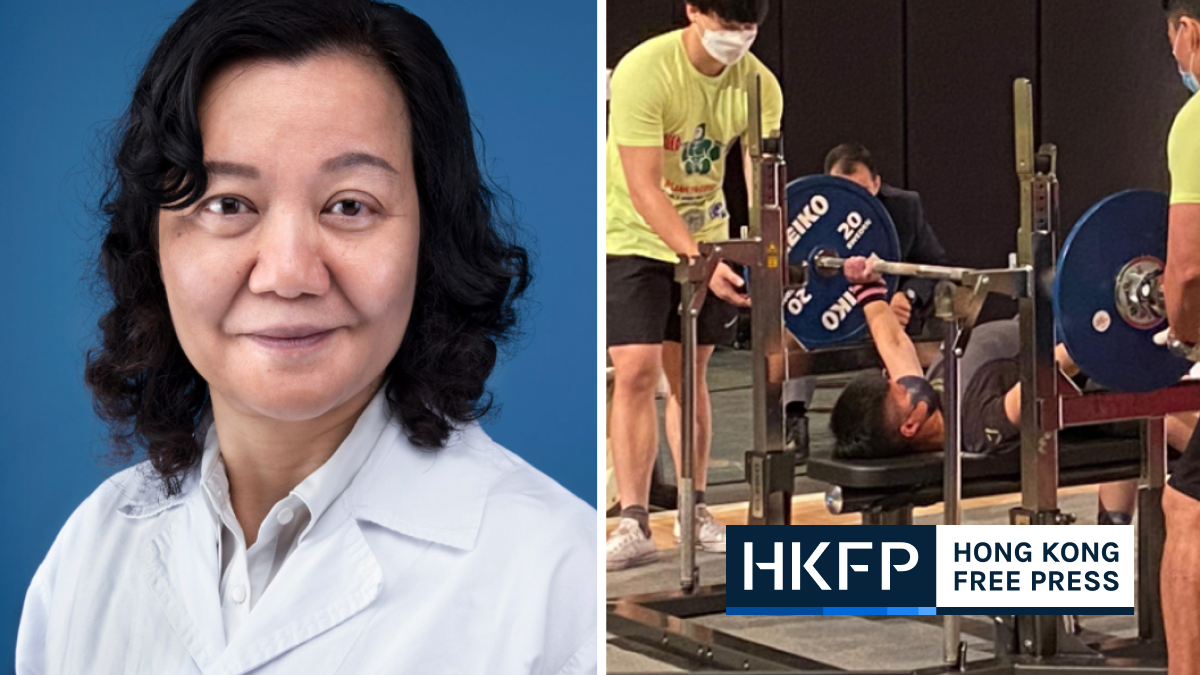In the more than three months since Hong Kong introduced a heatstroke warning system for outdoor workers, the city has sweated through its hottest summer since records began in 1884, according to the Hong Kong Observatory (HKO).

After the city was battered by Super Typhoon Saola and record rainfall caused by a trough of low pressure associated with Tropical Cyclone Haikui within a week, experts have warned that extreme weather will become the norm. With extreme heat, it will be outdoor workers who bear the brunt of it.
Designed to help those workers assess their risk of heatstroke, the thresholds of the three-tier Heat Stress at Work Warning system, introduced by the Labour Department in May, have been far higher than expected.
It consists of amber, red and black alerts and recommends different rest arrangements for employees working outdoors or without air conditioning – but none of it is legally binding, leaving employers with little obligation to offer the suggested breaks.
Ho Ping-tak, a construction worker and chairman of the Hong Kong and Kowloon Bamboo Scaffolding Workers Union, said he remembered one day when the temperature was 34 degrees Celsius, and even higher inside the construction site – his thermometer showed 57.4 degrees. Even so, the amber warning threshold was not reached.
“What will it be like if it is red [warning]?” Ho said in Cantonese. “We know that there will never be black.”

The Heat Stress at Work Warning alerts are issued according to the Hong Kong Heat Index (HKHI), which monitors the risk of heat stress for the general public.
Responding to inquiries from HKFP, the Labour Department said that from May 15 to August 15, warnings were issued on 45 days, for an average 2.6 hours per day. The department’s records show that only amber warnings were raised, which are issued when the HKHI has exceeded 30, a number that does not equate to the ambient temperature.
For a red or black warning to be issued, the index must reach 32 and 34, respectively.
‘What is the basis behind the system?’
Experts have challenged the science behind the thresholds.
“It is rarely 32 [on the HKHI]. There’s no such thing as going up to 34. What is the basis behind the system?” said Lee Boon Ying, former director of the Hong Kong Observatory.

The Labour Department said it relied on a 2015 research paper on the development of the HKHI by the Chinese University of Hong Kong and the Observatory to set the threshold for the lowest amber alert.
The research studied the impact of heat stress on excess hospitalisations, and found that the excess hospitalisation ratio “starts to pick up its rising rate” when the HKHI reached about 29.5. The ratio “rises rapidly” when the HKHI was above 30.3.
The Labour Department said it was “evident that the excess hospitalisation ratio rises rapidly” when the HKHI is above 30.3 – thus establishing 30 as the point at which the amber alert is issued.
However, meteorologists and medics have take issue with the department’s reasoning.
Mis-citing research
“The CUHK research paper talks about hospitalisation numbers, which are not directly related to those working outdoors,” Lee, the former HKO director, told HKFP. “Were those who were hospitalised equivalent to outdoor workers? It is unknown. No one knows.”
Yu Tak-sun, a doctor who chairs the Hong Kong Workers’ Health Centre, an NGO set up in 1984 to help workers with occupational injuries, agreed that the HKHI was not an appropriate way to measure the heat stress faced by outdoor workers.

Speaking in Cantonese, Yu provided a metaphor to outline his argument. He suggested imagining an allergy medicine that was developed from research focusing on children, and then using that medicine to treat elderly patients with respiratory infections.
“The HKHI was not developed to measure the heat stress impact on workers, which the Labour Department is suggesting,” Yu said.
The Labour Department said applying the index to the working population was justifiable because the background research had studied those aged 15-59, among other age groups. This, the department said, “comprises a large portion of the working population,” adding that there was a “very small difference” between excess hospitalisations within this group and those studied overall.
However, according to Yu, this was also a fallacy.
The 15-59 age bracket included students, housewives, people with disabilities and those with chronic diseases, Yu said. Additionally, very few industries required people to work in high temperatures and most people worked in air-conditioned offices.

“If [the department] says the age range fits, so we can refer to the research, to put it plainly, they are misciting the research,” Yu said.
Emily Chan, Assistant Dean of the Faculty of Medicine at the Chinese University of Hong Kong, developed the HKHI together with the Observatory. Asked if it should be used to measure heat stress on outdoor workers, she told HKFP: “We can only employ the best possible tool on hand. No doubt, more evidence is needed to understand health outcomes, behaviour uptakes and potential effective interventions to protect against heat stress on outdoor workers in Hong Kong as a subtropical urban environment.”
One system, two standards
When it came to setting the thresholds for the red and black warnings, the Labour Department said it relied on a different, international standard.
”The [CUHK and HKO] study only covers up to HKHI at 30.5. Therefore, it is necessary to suitably reflect the heat stress when HKHI rises beyond 30.5 by referring to other relevant international standards,” it said.
It did not specify how the thresholds for the higher warnings had been calculated.

According to Yu, the department “just uses [the research] when they like it. When they don’t like it, they use another [standard].”
Lee, the former Observatory chief, tried to work out the basis for issuing the two higher alerts. ”Following the information and the paper [the department] provided… I still cannot calculate the thresholds they suggested. I don’t know how they calculate them,” he said.
He said the department should study whether there was a scientific basis for these warnings.
WBGT is preferred
Lee, Yu, and Greenpeace project officer Tom Ng all suggested the government follow the Wet Bulb Globe Temperature (WBGT) index instead of the HKHI to measure the heat stress on workers.

The internationally recognised WBGT measures the heat stress on the human body at work in direct sunlight, accounting for temperature, humidity, wind speed, the angle of the sun, and cloud cover, or solar radiation.
The HKHI is calculated using the same three measurements as the WBGT but its formula has different coefficients.
“Many places are using WBGT and they recognise it. Even mainland China is using it,” Lee said. “It really has a scientific basis, and other places have done a lot of research on it.”

Ng said that in Japan, there were tools on every construction site to measure the WBGT and accurately measure the heat stress. He suggested the Hong Kong government provide the WBGT in different districts for workers to refer to.
Feasibility of rest arrangements
Critics challenge not just the scientific basis of the current warning system but also the feasibility of following its recommendations.
According to the guidelines, suggested rest arrangements vary depending on physical workload. Under an amber warning, workers with a “very heavy” workload are recommended to rest for 45 minutes and work for 15 minutes every hour.

“I haven’t heard of any construction sites that are following [the guidelines],” said Ho, the union chief.
Most workers were bound by tight construction schedules, which would prevent them from taking the suggested rest periods, he said. “You ask workers to take rests, but their schedules remain the same. There are still four days allocated to build one floor of a building. In other words, it increases the workload of the workers.”
Roy Liu, a curtain walling subcontractor, agreed, saying that if workers were to follow the recommendations, construction progress may be delayed.
“If we cannot meet the deadlines, there will be a lot of trouble. The main contractor may think there is a problem with our company’s capability or management, which could affect us being employed to undertake other projects in the future.”
Liu said the main contractor could impose penalties of several hundred thousand Hong Kong dollars on subcontractors for delays.

Allowing workers to take the recommended rest would also greatly increase costs in an industry where wages were already very high, Liu said.
Curtain wall installers were currently paid HK$1,000 a day, up from HK$600 six years ago. “If everyone rests for 45 minutes [every hour], the total time lost for 20 workers would be 15 hours… That would equal a loss of about two workers per day,” Liu said.
‘It must be legislation’
Ho, the scaffolding unionist, suggested that rest arrangements could be modified but the system should be made legally binding. “It must be legislation, not a guideline.”
Workers’ rest time could be added to the delay allowance in the same way as rainy days were accounted for, so that any interruptions caused by heatstroke warnings would not result in contractors or subcontractors being penalised.

Ho also suggested the government set more generous construction schedules for public projects so workers could take adequate rest, leading the way for the private sector to follow.
The Labour Department said that from May 15 to July 31, it conducted about 8,500 inspections of workplaces with higher heat stress risks and issued more than 530 warnings to “relevant responsible parties.”
The parties were urged to conduct risk assessments on the heat stress of employees at work, “and take necessary preventive measures in accordance with the assessment results.”
Support HKFP | Policies & Ethics | Error/typo? | Contact Us | Newsletter | Transparency & Annual Report | Apps
Help safeguard press freedom & keep HKFP free for all readers by supporting our team

LATEST FROM HKFP
HKFP has an impartial stance, transparent funding, and balanced coverage guided by an Ethics Code and Corrections Policy.
Support press freedom & help us surpass 1,000 monthly Patrons: 100% independent, governed by an ethics code & not-for-profit.
Support HKFP | Policies & Ethics | Error/typo? | Contact Us | Newsletter | Transparency & Annual Report | Apps
Help safeguard press freedom & keep HKFP free for all readers by supporting our team

LATEST FROM HKFP
HKFP has an impartial stance, transparent funding, and balanced coverage guided by an Ethics Code and Corrections Policy.
Support press freedom & help us surpass 1,000 monthly Patrons: 100% independent, governed by an ethics code & not-for-profit.
Support HKFP | Policies & Ethics | Error/typo? | Contact Us | Newsletter | Transparency & Annual Report | Apps
Help safeguard press freedom & keep HKFP free for all readers by supporting our team

LATEST FROM HKFP
HKFP has an impartial stance, transparent funding, and balanced coverage guided by an Ethics Code and Corrections Policy.
Support press freedom & help us surpass 1,000 monthly Patrons: 100% independent, governed by an ethics code & not-for-profit.
Support HKFP | Policies & Ethics | Error/typo? | Contact Us | Newsletter | Transparency & Annual Report | Apps
Help safeguard press freedom & keep HKFP free for all readers by supporting our team

LATEST FROM HKFP
HKFP has an impartial stance, transparent funding, and balanced coverage guided by an Ethics Code and Corrections Policy.
Support press freedom & help us surpass 1,000 monthly Patrons: 100% independent, governed by an ethics code & not-for-profit.






















